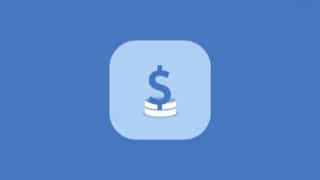Buying a home can be a significant financial commitment, and for many Americans, securing the right kind of loan is the first major step toward homeownership. For borrowers who may not qualify for conventional mortgages, an FHA loan can offer a more accessible route. These loans are backed by the Federal Housing Administration and are particularly popular among first-time buyers. A key detail that borrowers must understand is the max FHA loan amount available, which can vary depending on location, housing type, and the current market conditions. Understanding the maximum limits of FHA loans is essential for anyone planning to finance their home with this government-backed option.
What Is an FHA Loan?
Overview of FHA Loans
FHA loans are mortgage loans insured by the Federal Housing Administration. This insurance protects lenders from losses in case borrowers default on their loans. Because of this added protection, lenders are often more willing to approve borrowers with lower credit scores or smaller down payments.
Advantages of FHA Loans
- Low down payment requirements (as low as 3.5%)
- More flexible credit qualifications
- Competitive interest rates
- Ability to include closing costs in the loan
However, one important limitation to consider is the maximum loan amount, which defines the highest mortgage value you can borrow using FHA financing.
Understanding the Max FHA Loan Amount
What Determines the FHA Loan Limit?
The max FHA loan amount is not a single, fixed number for the entire country. Instead, it is determined based on:
- Geographic location– Loan limits vary by county and state due to differences in housing prices.
- Type of property– The limits differ for single-family homes, duplexes, triplexes, and four-unit properties.
- National housing price trends– The Department of Housing and Urban Development (HUD) adjusts loan limits annually to reflect changes in average home prices.
Low-Cost vs. High-Cost Areas
HUD establishes different loan limits depending on whether the home is in a low-cost or high-cost area. For example, a home in rural Indiana will have a significantly lower max FHA loan amount than a property in San Francisco or New York City.
2025 FHA Loan Limits
Standard Limit for Low-Cost Areas
As of 2025, the baseline max FHA loan amount for a single-family home in low-cost areas is approximately $498,257. This amount increases with the number of units:
- One-unit: $498,257
- Two-unit: $637,950
- Three-unit: $771,125
- Four-unit: $958,350
High-Cost Area Loan Limits
In high-cost housing markets, FHA loan limits are higher to reflect the increased price of homes. For 2025, the ceiling for high-cost areas is:
- One-unit: $1,149,825
- Two-unit: $1,472,250
- Three-unit: $1,779,525
- Four-unit: $2,211,600
These numbers are subject to change each year, so it’s important to check the HUD website or consult a mortgage lender for the latest figures in your specific area.
Special Exceptions for Certain Areas
Alaska, Hawaii, Guam, and the U.S. Virgin Islands
FHA loan limits are even higher in these areas due to elevated construction and housing costs. Borrowers in these locations can benefit from extended limits that exceed those in the contiguous United States.
Federally Declared Disaster Areas
In some cases, areas recovering from federally declared disasters may be granted temporary increases in FHA loan limits to help residents rebuild or relocate. These adjustments are typically short-term and require official declarations from FEMA or HUD.
Why Loan Limits Matter
Impact on Homebuyers
The max FHA loan amount determines how much financing a borrower can receive. If the desired home exceeds the loan limit, buyers will need to cover the difference with their own funds or seek alternative financing, such as a conventional loan or jumbo loan.
Influence on Housing Market Trends
FHA loan limits can indirectly influence housing demand. In markets where FHA loan caps are relatively low, demand may lean toward more modestly priced homes. Conversely, higher limits can broaden the pool of eligible properties for FHA buyers.
Loan Limits and Property Types
Loan limits also play a role in the types of homes FHA borrowers pursue. While single-family homes are the most common, some buyers may choose multi-unit properties to generate rental income. However, the entire purchase must still fall within FHA loan limits for that property type and location.
How to Check the FHA Loan Limit in Your Area
Using HUD Resources
HUD offers an online search tool that allows users to enter their county and state to view local loan limits. This resource provides up-to-date information and helps borrowers understand how much they can borrow with an FHA loan.
Consulting with Mortgage Lenders
Another effective way to find out your max FHA loan amount is by speaking directly with a lender. Loan officers can provide tailored advice based on your financial profile, property goals, and local housing market conditions.
Tips for Homebuyers Using FHA Loans
Stay Within Budget
Even if you qualify for the maximum loan amount, it’s important to consider your monthly payments, taxes, insurance, and maintenance costs. Buying below your max loan amount can provide more financial flexibility.
Get Pre-Approved Early
Pre-approval helps you understand your borrowing capacity and shows sellers that you are a serious buyer. Knowing your FHA loan limit upfront will streamline the home search process.
Factor in Additional Costs
In addition to the down payment, FHA loans come with mortgage insurance premiums (MIP). This includes an upfront payment and monthly installments, which should be factored into your budget.
The max FHA loan amount is a crucial factor for anyone planning to finance a home through the Federal Housing Administration. These limits are designed to reflect housing market realities across different parts of the United States and vary based on location, property type, and economic conditions. Staying informed about the current FHA loan limits and how they apply to your specific situation can help you make smarter financial decisions when buying a home. Whether you’re a first-time buyer or looking to invest in a multi-unit property, knowing your borrowing limits is the foundation of a successful homeownership journey.
